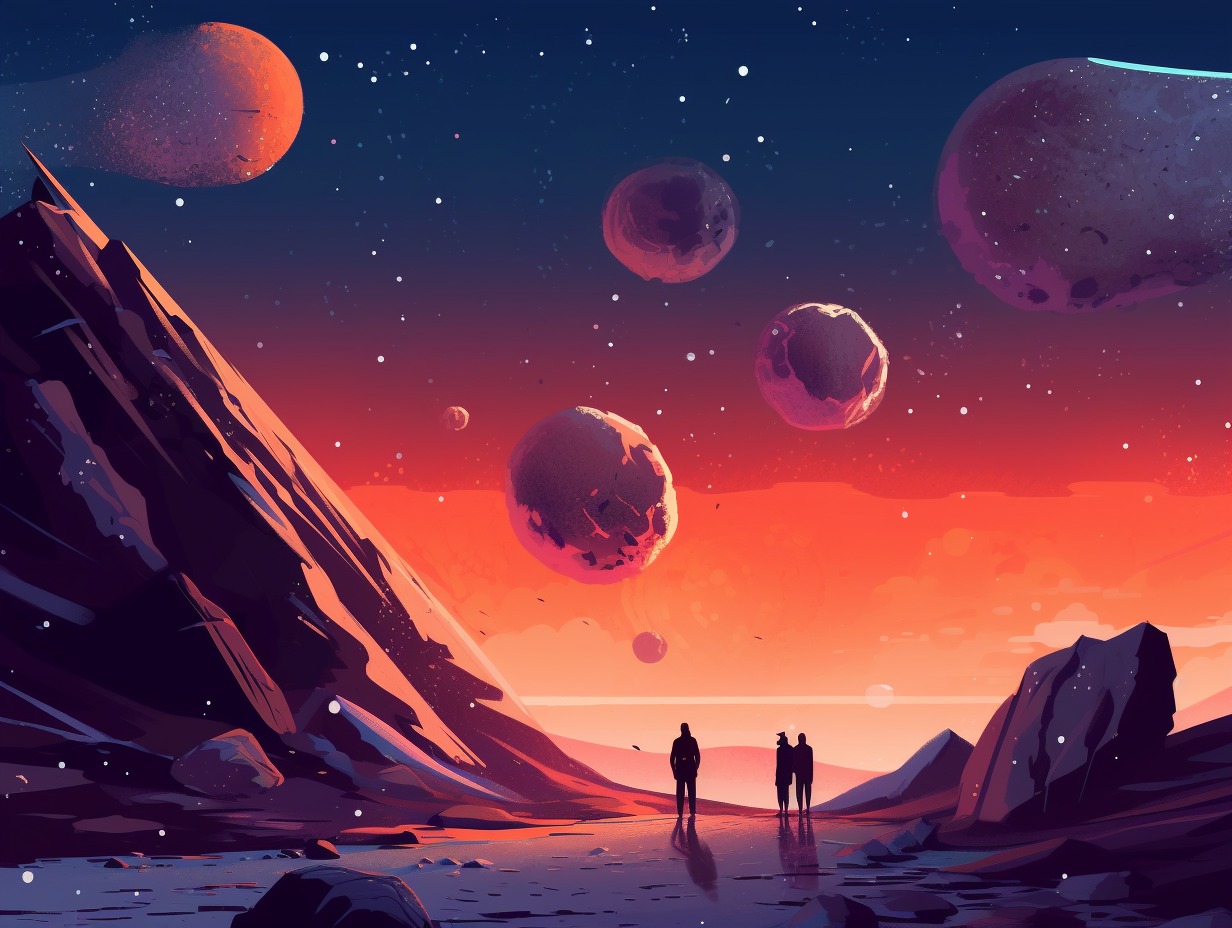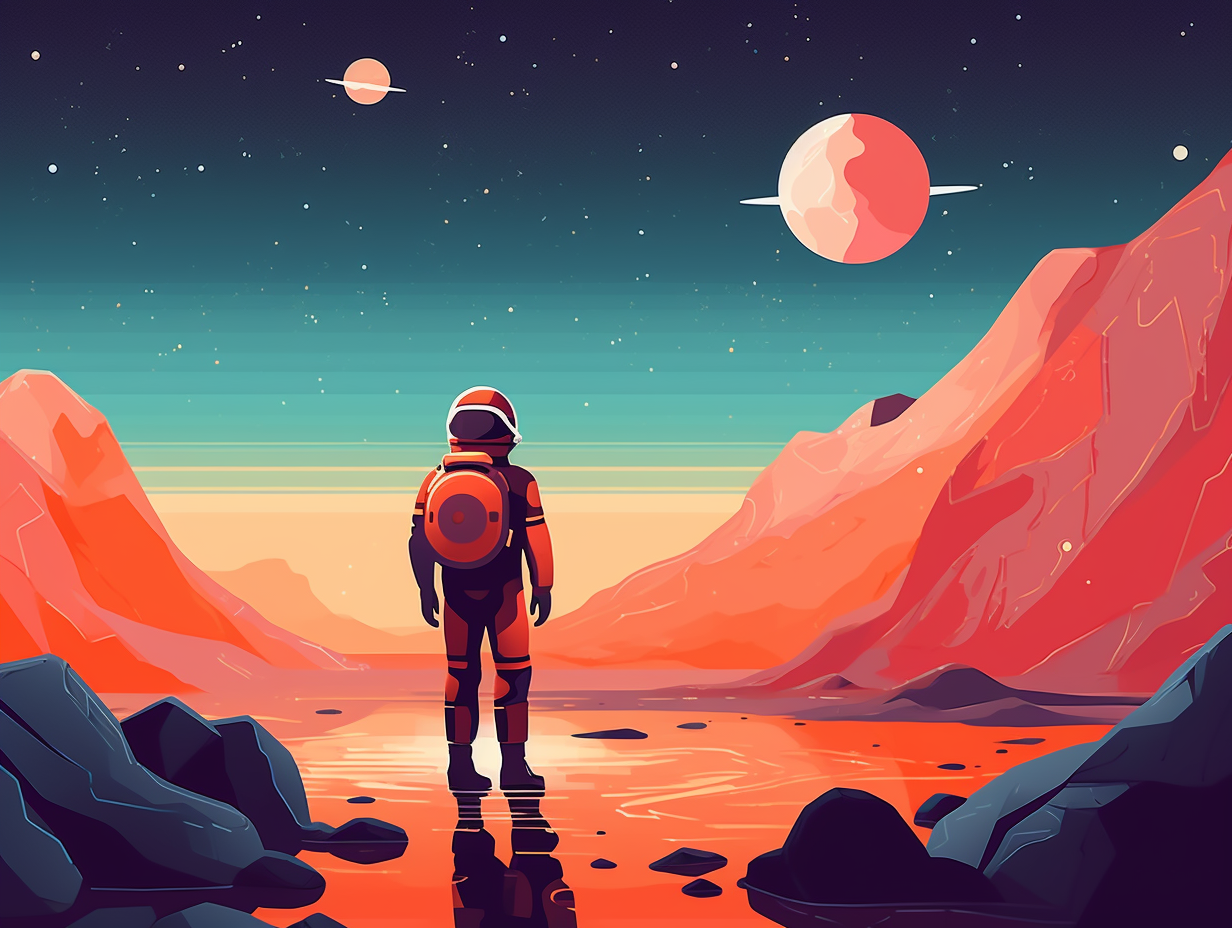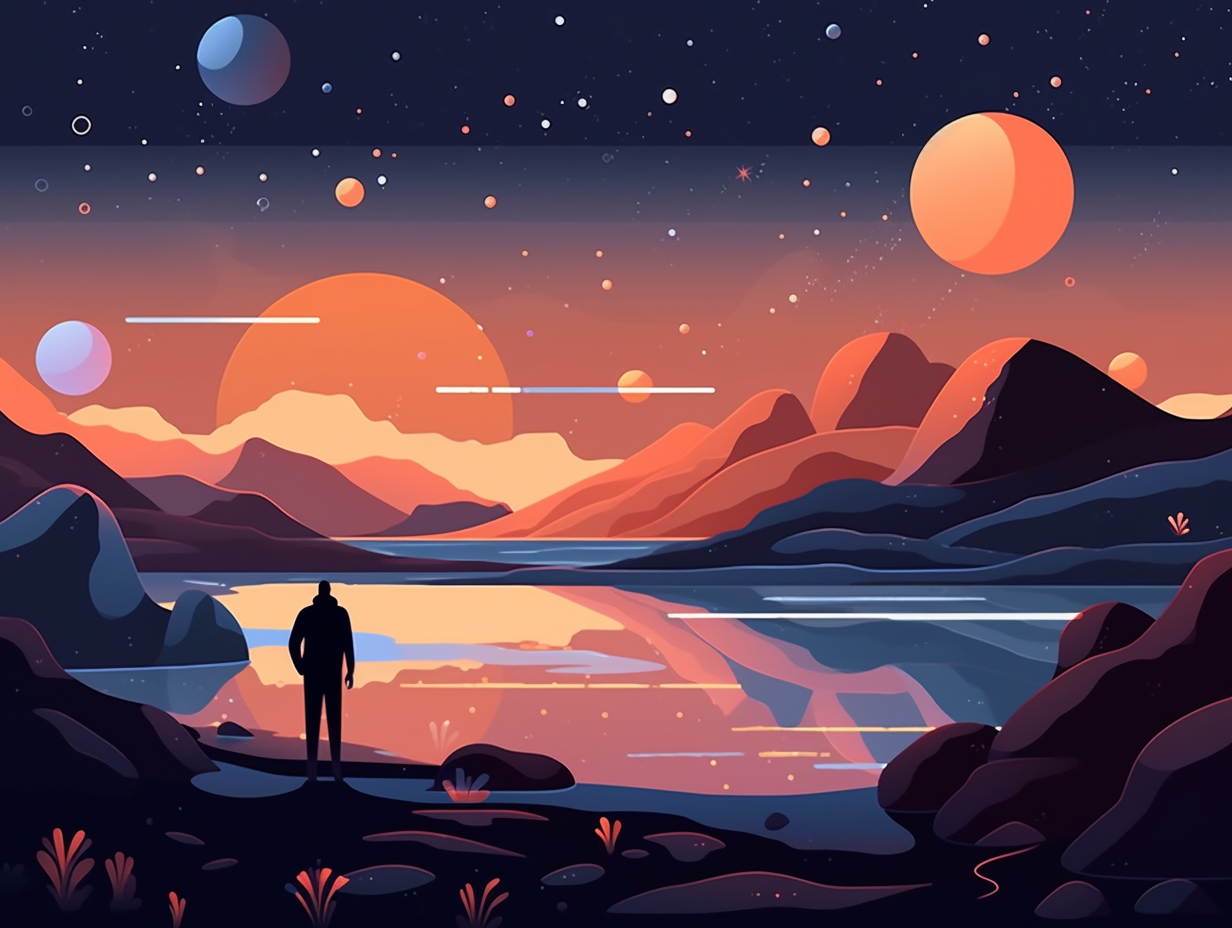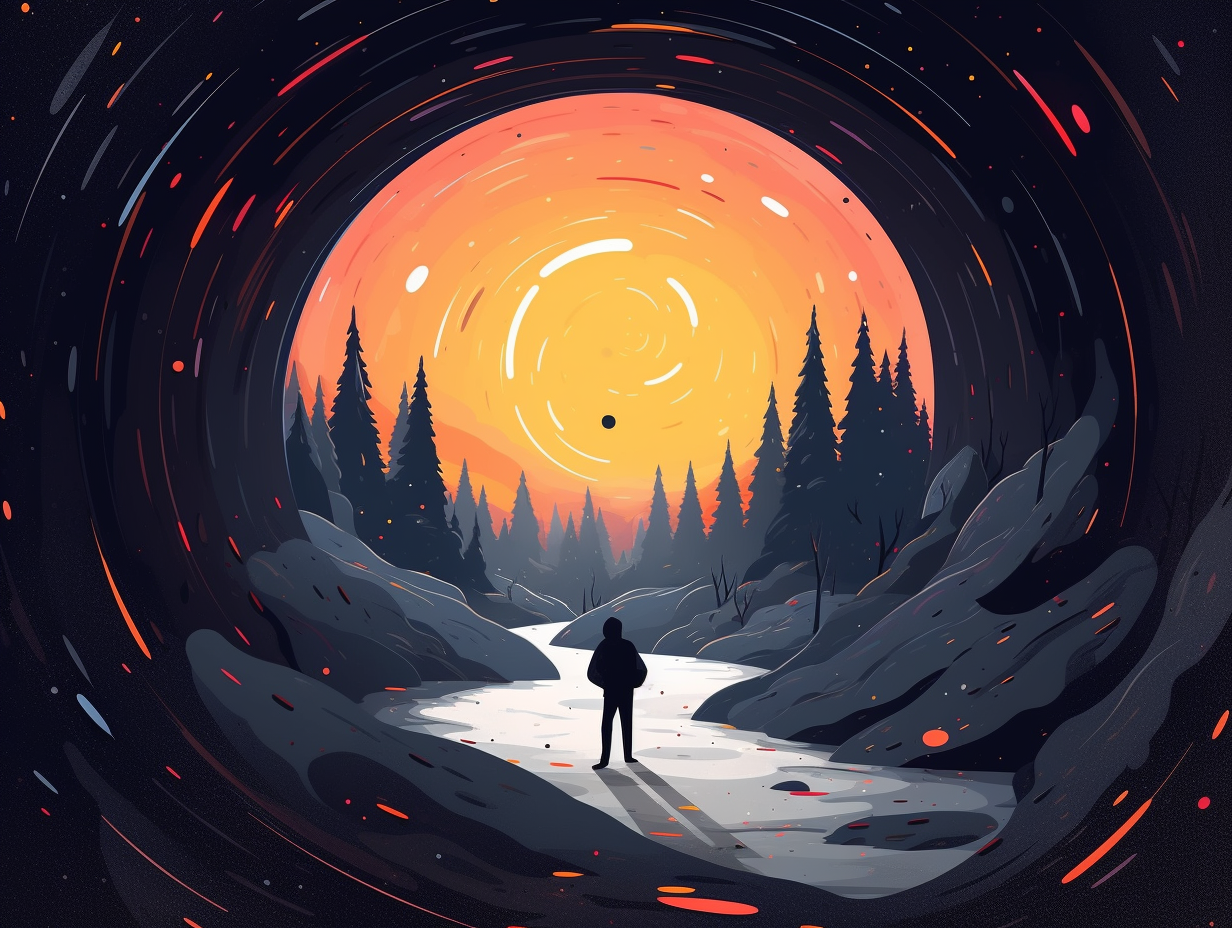24 Out-of-this-World Facts About Space That'll Leave You Starstruck!

1. ISS Bread Ban
Bread crumbs: space's worst nemesis and astronauts' fear! When the International Space Station transforms into the Interstellar Bread-free Zone, tortillas come to the rescue: Bread is banned aboard the ISS due to crumb-related hazards in microgravity, so tortillas become the crew's go-to wrap. Additionally, astronauts' taste buds go on a cosmic rollercoaster, making them crave intense flavors like sweet, salty, bitter, and spicy to spice up their out-of-this-world dining.
Source => kennedyspacecenter.com
2. No Smelling in Space
Why did the astronaut break up with his partner? They lost the "scent" of their romance: In space, it's impossible to smell anything due to the absence of air, which leaves scent molecules with no medium to reach our noses – even the strongest of smells will remain undetected, unless you're wearing a spacesuit with its own oxygen supply!
Source => tigtagworld.co.uk

Did you know the oldest and most distant galaxy, GN-z11, has been observed just 400 million years after the Big Bang? Explore more cosmic fun facts about this fascinating dating story of our galactic protagonist and its charming collection of stars! 🌌✨
=> Fun Facts about The-Universe
3. Astronaut Heart Health
Astronauts in space might just give new meaning to the phrase "take it easy on the heart": extended periods in microgravity have been found to significantly reduce heart rate and arterial pressure among our celestial explorers!
Source => pubmed.ncbi.nlm.nih.gov
4. Space Vacuum
Hey, did you know that before you reach for the vacuum cleaner, space has already one-upped your tidying game with its own vacuum? Dust bunnies, beware: Even in the farthest reaches of intergalactic vastness, a few sneaky hydrogen atoms lurk in every cubic meter, making space a vast (though almost invisible) treasure trove of the universe's building blocks!
Source => en.wikipedia.org

5. Cosmic Ray Confetti
When the universe sneezes, we get showered with high-speed, space confetti: Cosmic rays are actually high energy charged particles originating from outer space that travel at nearly the speed of light, striking Earth from all directions, consisting of atomic nuclei, subatomic particles, and deriving their energy mainly from supernova explosions in our galaxy.
Source => sites.srl.caltech.edu
6. Olympus Mons: Mars' Mega Mountain
Move over, Mount Everest: Mars is the proud host of the most monumental mountain in our solar system! Aspiring Martian hikers, meet Olympus Mons, your new Everest-on-steroids: this colossal volcano stands three times taller at 22 kilometers high with a base as vast as Arizona, setting new records for astronomical awesomeness.
Source => htschool.hindustantimes.com
7. Titan's Atmosphere
If Saturn ever decides to throw a moon party, Titan's definitely got the atmosphere for it – it's thicker than Earth's, and even boasts its own liquid methane rain! Seriously though: Titan's atmosphere has higher pressure than Earth's, and its methane cycle creates weather patterns with clouds, rain, rivers, and seas of liquid methane and ethane – making it the only celestial body besides Earth to have surface liquid.
Source => spacetechasia.com
8. Milky Way's Planets Galore
You'd think our galaxy was hosting a cosmic party with all these crowded attendees: The Milky Way is home to about 400 billion stars and potentially up to 40 billion Earth-sized planets in habitable zones, giving us even more reasons to ponder if there's a neon-sign-wielding extraterrestrial just waiting to say, "Welcome to the party, Earthlings!"
Source => futurism.com
9. The Sun: Fusion Chef
You might say the Sun is the ultimate "fusion chef": It's constantly cooking up something hotter than anything you've ever tasted while never needing to step away from its sizzling kitchen! The pièce de rèsistance: The PP chain reaction, which turns hydrogen into helium, is not only responsible for the Sun's immense energy output, but is also the foundation for the existence of every life form on Earth. With each reaction producing a whopping 26.4 mega-electronvolt, the Sun outshines all of mankind's power production in a mere blink of an eye!
Source => secretsofuniverse.in

10. Diamond Planet
If bling is your thing, then this cosmic destination should be on your must-visit list: Scientists have identified a super-Earth planet called 55 Cancri e, where at least a third of its mass is composed of pure diamond, surrounded by a surface of graphite and even more diamond instead of boring old water and granite.
Source => space.com
11. Orbital Traffic Jam
Brace yourselves: outer space is about to become the galaxy's trendiest parking lot! In a celestial game of cosmic Tetris, Earth's orbit will soon be filling up faster than a millennial's iPhone storage: experts predict that within a few years, we could have an astronomical traffic jam of 20,000 to 100,000 satellites circling our humble little planet, creating potential hazards for future space launches and exploration.
Source => space.com
12. Butterscotch Martian Sky
Feeling a little spacey? Well, hold onto your butterscotch candies because Mars is serving up some cosmic confections: The Martian sky, contrary to popular belief, actually boasts a yellowish-brown, butterscotch hue due to the dust particles containing the mineral limonite; red or pink skies only grace the Martian landscape during sunsets or sunrises.
Source => webexhibits.org
13. Earth's Fast Dance
Hold onto your hats, for time flies when the Earth's having a spinning gala: On June 29, 2022, the Earth completed its jig just 1.59 milliseconds shy of 24 hours, making it the fastest dance around the sun ever recorded, due to our planet's molten core shenanigans, oceanic twists, atmospheric sway, and climate change's chilly effect on the poles.
Source => en.wikipedia.org
14. Black Hole Baseball
What do black holes and baseballs have in common? Turns out, they're both pros at playing "catch and never release": Inside the event horizon of a black hole, space and time switch roles, so throwing a baseball away from the center would only cause it to move closer to the black hole and ultimately be absorbed, never to return again.
Source => physics.stackexchange.com

15. Martian Communication
Freeze frame, wait a minute, this isn't Earth: Did you know, communicating with astronauts on Mars can be as challenging as your WiFi giving up in the middle of your favorite video call? At the speed of light, it takes around 3 minutes and 2 seconds for a message to travel from Earth to Mars and the same for a response to return. However, NASA is developing space-laser communication, which could transmit data 10 to 100 times faster than radio waves, potentially sending a detailed map of Mars back to Earth in just 9 weeks instead of 9 years.
Source => businessinsider.com
16. Venus-7: Soviet Space Probe
Venus has always been a hot mess, but when the Soviet Union decided to crash the party in 1970, things got a whole lot steamier: The Venus-7 mission became the first spacecraft to successfully land on Venus and transmit data back to Earth, surviving a whole 23 minutes amidst scorching temperatures and crushing atmospheric pressure before succumbing to the celestial diva's fiery allure.
Source => rbth.com
17. ISS Laundry
Who needs a laundromat when you can just trash your laundry? Clothes swapping reaches new heights aboard the International Space Station: Due to water scarcity, astronauts wear their clothes until they're unwearable, then discard them, ultimately letting the waste burn up in the atmosphere during re-entry.
Source => news.cgtn.com
18. Saturn's Stylish Rings
If Saturn had an Instagram account, it would surely be an influencer with more likes than it could count for its fashionable accessories: The sixth planet from the sun is adorned with incredible, breathtaking rings composed of countless ice particles and debris.
Source => britannica.com
19. Mars Dust Storms
Mars loves to throw planet-wide parties, and the guest of honor is dust: Actually, Mars experiences gigantic dust storms that can last for months and cover the entire planet. Back in May 2018, NASA's Opportunity rover got caught in one of these colossal ragers, which unfortunately blocked out the sunlight needed to fuel its solar arrays. At 15 years old, the rover tried to hang with the big boys, but ultimately it couldn't ride out the storm and succumbed to a series of critical faults caused by a lack of power.
Source => space.com
20. Milky Way's Sweet Name
Lactose intolerant despair, there's celestial debris in your hair: The Milky Way galaxy is named after a Greek myth where the goddess Hera sprayed milk across the sky, causing sweet confusion. Elsewhere in the world, the Chinese call it the "Silver River," and the Kalahari people dubbed it the "Backbone of Night."
Source => amnh.org
21. Lunar Sniffles
Ah, the curse of the lunar sniffles: All 12 astronauts who landed on the Moon during the Apollo missions experienced sneezing and nasal congestion caused by the sharp and abrasive particles of lunar dust, sparking concerns for the potential health risks and prompting an extensive research program by the European Space Agency.
Source => esa.int
22. Boomerang Nebula: Coldest Place
Looking for a place to chill out in the universe? You might want to try the Boomerang Nebula, the ultimate "ice box" in the cosmos: Scientists have discovered that it is the coldest known place in the universe, with a bone-chilling temperature of just one degree Kelvin, which is -458 degrees Fahrenheit (-272 degrees Celsius) – that's even colder than the baseline temperature of outer space itself (2.7 Kelvin), thanks to the absence of energy-absorbing matter.
Source => usatoday.com
23. Meteorite Cocktail
Ready for a meteorite cocktail? Just mix a dash of Earthly rocks, a splash of heavy metal, and a pinch of space-age stardust, et voilà: the perfect blend of cosmic concoction! But seriously: meteorites come in three main types - stones, irons, and stony irons - with each one revealing tantalizing secrets about the origins of these celestial visitors and their parent bodies.
Source => www2.tulane.edu
24. Solar System's Water Obsession
It turns out the solar system's planets and moons have been hoarding ice like a squirrel stocking up nuts for winter: Water is actually abundant in various forms throughout our cosmic neighborhood, with Mercury's polar craters, Mars' ice caps and underground deposits, Ganymede's water ice crust, and Enceladus' icy plumes all showcasing Mother Nature's interplanetary ice obsession.
Source => usgs.gov
Related Fun Facts




















